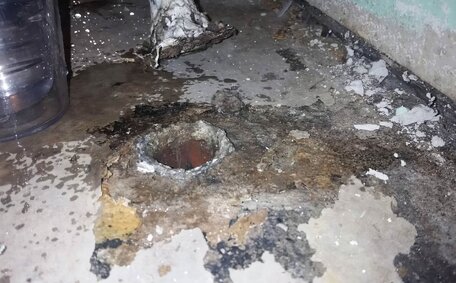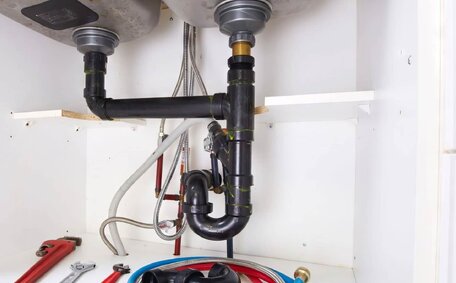Introduction to Future Sustainable Gas Solutions
As the world embarks on an energy transition towards renewable energy sources, including alternatives from oil gas companies, there is a growing need to develop gas solutions that are more sustainable. Currently, numerous industries remain dependent on natural gas; nevertheless, renewable gas is gaining importance for power generation, heating, and cooking. However, transitioning away fossil from fossil fuels which include natural gas, undermines energy efficiency and leads to substantial greenhouse gas emissions that drive climate change.
Emerging alternatives like renewable hydrogen biomethane, aligned with the Paris Agreement goals, embody sustainable practices, offering the potential for cleaner, lower emission energy options that could replace traditional natural gas. The development of these renewable gases, specifically gas renewable gas we can source, is crucial for mitigating global warming by reducing emissions from gas usage while retaining the flexibility and accessibility of existing gas infrastructure.
This article from Bankstown Plumbing will provide an overview of promising sustainable gas solutions and projects underway globally and within Australia.
We’ll cover the benefits of transitioning to renewable gases, examine hydrogen and biomethane production methods, highlight local renewable gas projects at Hydrogen Park South Australia, and discuss how sustainable gases can assist with emissions reductions targets and net zero goals. As gas fitting and plumbing specialists servicing Bankstown and surrounding regions, we’re closely following advancements in renewable gases and how they may impact systems we service across residential and commercial settings.
The Role of Renewable Gas in Achieving Sustainability Goals
Options like natural gas renewable gas energy, including biomethane and renewable hydrogen, play a critical role in empowering us to use our existing energy systems more sustainably and progress towards reduced emissions and a sustainable future.
Organisations like the United Nations have put forward ambitious sustainability targets, suggesting that we can use our existing resources more judiciously, including commitments to net zero emissions by 2050. Transitioning from fossil fuel-based natural gas to renewable gas alternatives directly contributes to these objectives by enhancing the environmental quality of the gas supply.
Energy use in the form of gas currently accounts for more than half of household energy consumption in Australia. Adopting renewable gases opens opportunities for the oil and gas sector to innovate, changing the energy supply while ensuring customer choice by maintaining appliance selection and gas infrastructure access. At the same time, biomethane and hydrogen have a lower warming potential and can be leveraged in the same way natural to natural gas but with the target being net zero carbon dioxide emissions.
South Australia is paving the way toward a 100% renewable gas target by 2040 with initiatives like Hydrogen Park, where hydrogen is blended into the local gas network. Scaling up renewable gas production and injection into pipelines is pivotal for the industry, with a resolute 2040 stretch target no later than 2040 for achieving net zero emissions.
this endeavour aligns with the 2040 stretch target, ensuring that customers gas can continue to access to gas for both residential and commercial uses, and promotes growth in eco-friendly industries.
At Bankstown Plumbing, located not far from Mitchell Park, we harness growing interest by gearing up 5 renewable gases like biomethane and hydrogen for cleaner energy solutions. Tracking developments in this space allows us to best serve local customers and support emissions reduction efforts aligner with sustainability goals regionally and globally.
Biomethane as a Renewable Gas Option
Biomethane is emerging as a more eco-friendly alternative than other low carbon renewable gas options that can be substituted for fossil fuel-based natural gas. Biomethane is produced through anaerobic digestion of organic material like food waste, agricultural residues or wastewater biosolids. This process generates a biogas that can then be upgraded into pipeline-quality biomethane.
Biomethane provides comparable outputs to natural gas with roughly half the associated emissions, resulting in significantly lower greenhouse gas emissions overall. When sourced from waste streams, biomethane’s production and utilization also reduce methane leaks, enhancing sustainability by limiting emissions from landfills. Biomethane can be used in the same way natural gas with existing gas appliances and distribution infrastructure, enabling seamless integration.
Demonstration projects utilising renewable gases such as biomethane are already underway across Australia. Queensland’s Earthpower Technologies converts commercial food waste into gas injected into the local distribution network, thus improving the energy supply those industrial customers depend on. The Barwon Water biomethane facility in Victoria processes biosolids from wastewater treatment to generate gas for power generation.
Facilities dedicated to 100 renewable gas showcase biomethane’s potential while diverting waste from landfills, positioning itself as an integral part of the energy use every day across all sectors. There is increasing interest in scaling up biomethane production and grid injection to help reduce emissions. For Bankstown Plumbing, understanding the types of gas we can use such as biomethane, assists us in advising commercial clients on integrating these emerging energy solutions.
Producing and Using Hydrogen Gas
Hydrogen, as potent as the natural gas supplied traditionally, offers immense potential as a renewable gas option, particularly when generated through low-emission electrolysis using renewable electricity, known as ’green hydrogen’. Multiple methods exist to produce hydrogen including fossil fuel reforming paired with carbon capture technologies.
Renewable hydrogen applications impact the residential, commercial, and industrial sectors, including 100% renewable networks within the oil and gas industry. Introducing a hydrogen blend into the existing gas distribution network, as demonstrated at Hydrogen Park South Australia, facilitates direct access to renewable gas for customers. Transport, manufacturing, refining and mining sectors also present opportunities for renewable hydrogen integration.
Hydrogen offers key advantages, such as versatility, scalability for large-scale and long-term energy storage, and transportability post-production, making it particularly beneficial for data centres. Upgrades to existing infrastructure allow for higher percentages of hydrogen to be blended into gas networks. In the longer-term, 100% hydrogen networks may emerge once end-use appliances are compatible.
Supplementing electrification, renewable hydrogen facilitates the broad transition away from fossil fuels in heating, transport, industrial, and power generation sectors. It is a fundamental pillar in supporting state and national efforts to reach net zero carbon emissions in the coming decades. Continual decreases in renewable hydrogen production costs will further aid its uptick and position in the future renewable energy mix.
For firms like Bankstown Plumbing, growth in renewable hydrogen and biomethane signal an evolving clean energy landscape we are actively tracking. Understanding production methods, grid integration, safety considerations and appliances compatibility allows us to best inform customers while supporting renewable gas developments locally and beyond.
Global Progress in Renewable Gas Projects
Promising developments in renewable gas projects and technologies are occurring globally, with initiatives focused on expanding sustainable energy solutions. The International Energy Agency (IEA) forecasts strong growth in natural gas demand to 2040, indicating the need for low-emission supplies through renewable gases.
Countries worldwide are advancing renewable hydrogen and biomethane developments. Japan is aiming for 900,000 fuel cell vehicles using hydrogen by 2030. The UK recently announced funding support for new demonstration projects using excess renewable energy for hydrogen production.
In the United States, several proposed industrial-scale green hydrogen facilities, including a 380 MW electrolysis plant in Utah, highlight the shift towards renewable gas. Australia’s own Hydrogen Park South Australia acts as a pioneered demonstration site for blending hydrogen into local gas distribution networks.
While most renewable gas developments remain in early stages, targeting 10 renewable percentage points of the energy mix, scaling production with sustainable energy sources, including technologies such wind solar, for hydrogen energy conversion will enable increased market uptake.
Bankstown Plumbing monitors these global advancements, recognising that renewable gases are shaping a future of sustainable energy systems in line with net zero emission targets. Learning more about the progress and remaining challenges for renewable gases allows us to advise local Sydney customers on these emerging energy solutions.
Overcoming Challenges to Widespread Renewable Gas Adoption
Despite the significant potential of renewable gases such as biomethane and hydrogen, their widespread adoption is hindered by several barriers. Key challenges include high production and infrastructure costs, safety considerations, technological readiness and insufficient policy incentives.
Currently, producing hydrogen via renewable electrolysis or upgrading biogas into biomethane carries higher price tags than conventional natural gas. Investments into commercial-scale plants and enhancing pipeline compatibility for gas blending enable greater cost efficiencies but require upfront financing.
Consumer reluctance towards new gas sources could hinder adoption despite a projected gas volume increase by 2030, barring appropriate safety assurances. Stringent safety standards, including those for odorants and pipeline integrity, apply to all gas types, from natural to renewable blends and fully renewable gases. Transparent communication around production, storage, transmission and end-use is vital.
While numerous renewable gas technologies are currently on the market, improvements in durability, efficiency, and scalability through continuous R&D will encourage broader deployment. Policy measures such as renewable gas targets, subsidies, and funding schemes that recognise broader environmental benefits are crucial for industry growth.
Addressing these varied challenges requires collective action from gas producers, governments, research institutions and consumers alike. The full potential of renewable gases in facilitating a carbon-neutral future hinges on competitive pricing, safe management, and clear understanding.
The Future of Sustainable Gas
Looking ahead, sustainable gases like renewable hydrogen and biomethane are vital for transitioning away from reliance on fossil fuels such as coal and oil. These gases offer a means to decarbonize our primary energy source—gas, aiming for net zero emissions targets, while preserving access to current distribution infrastructure.
Government policy and industry investment will be key to scaling these technologies over the next decade. Schemes incentivizing production and pipeline injection, such as the Hydrogen Guarantee of Origin scheme in South Australia, can aid market growth. Continued development support for commercial facilities will also assist in driving down costs through economies of scale.
As consumer interest grows with a preference for eco-friendly options, marketing renewable gas also means customers can opt into cleaner energy for households and businesses, fostering further adoption. Allowing customers to opt-in to renewable gas plans provides a simple way to encourage engagement while signalling market demand.
Bankstown Plumbing acknowledges the critical role of renewable gases in Australia’s progression towards a 100% renewable energy mix. We stay informed on the latest renewable hydrogen and biomethane advancements to best advise local customers on modern solutions applicable to their properties.
Get in touch with our team today to check your email address at jobs@bankstownplumbingservices.com.au or phone 1300 349 338 to discover how Bankstown Plumbing can assist you in integrating renewable energy innovations.






